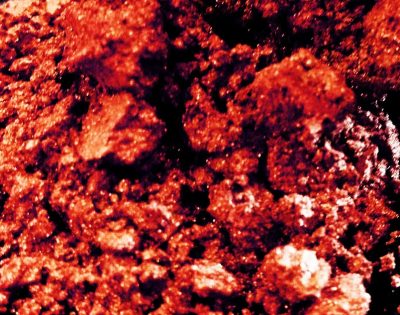How Pigments and Dyes Differ
What is the difference between pigments and dyes? The easy answer is that dyes are soluble, while pigments are insoluble. So much for easy answers! When we scratch beneath the surface, differences between these two classes of colorants are much more complex.
Pigments and dyes also differ in chemical composition and particle size, lightfastness and longevity, heat and chemical resistance, as well as range of product offerings and color gamut. These characteristics should be important to sign maker, screen printers and digital printers as well as to the serious artist, because it affects image reproduction and product durability.
To make paint, such as the paint used in the sign industry or artist’s oil paints or an pigment ink used in wide format printers, the pigment powder is mixed with a resin or binding medium. The solid particles never dissolve. Instead the particles are dispersed and suspended in their resin.
While the particles of pigments and the particles of resin are physically mixed together, there is no chemical combination. This suspension or mixture is referred to as a colloid. Technically speaking, the particles of pigment are so small that they remain suspended in the mixture do not settle to the bottom. In the real world, always mix your sign paints before use.
Pigments are generally classified into two broad categories: inorganic and organic. In comparing the two groups of pigments we can make the following generalizations:
- Inorganic pigments are generally more opaque, providing greater hiding power than organic pigments.
- Organic pigments are usually brighter than inorganic pigments.
- Inorganic pigments are generally more fade resistant and chemical resistant than organic pigments.
Listed below are several characteristics which distinguish pigments from dyes:
- Insoluble in water and most solvents. Particulate structure is generally unaltered when combined in ink and paint formulations. Rather than dissolving, the particulates remain in suspension in the liquid vehicle.
- Fewer available pigments compared to the much wider range of dyes available. In part, this results because dyes are in greater demand, being used widely in fabric decoration, food coloring and cosmetics, as well as having applications in the paint and printing fields.
- Limited color gamut compared to dyes. Traditionally, pigments produce less vibrant colors. However, today’s digital printers, which feature expanded ink sets of six or more colors, produce vivid color reproduction which rivals dye based digital inks. The advantage is that printing today can be as beautiful as it is durable.
- Typically, pigments are also more lightfast than dyes, especially when subjected to the extremes of an outdoor environment. Exterior applications subject colorants to more intense UV light combined with elevated temperatures, humidity and air pollution.
- Significantly larger particle size than dye molecules. The larger size of pigment particles may provide better durability, yet may present clogging problems in digital printing.
- Adhesion to the substrate requires a binder or adherent. By comparison, dyes often are absorbed by the substrate, such as paper or wood, and often will adhere without any type of binder.



